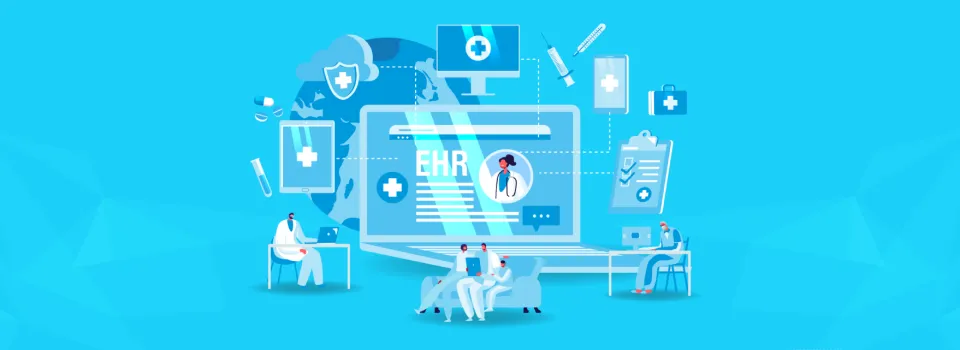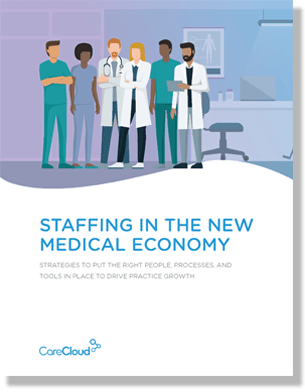CareCloud EHR promises to improve the efficiency of healthcare organizations. Medical practitioners are already overburdened daily; moving from a paper-based to a cloud-based environment is a blessing. It is especially true if the latter is subject to HIPAA-mandated constraints that assist the practice in adhering to industry regulations.
EHRs are the first stage of healthcare transformation. Some of the benefits of cloud-based electronic health records are as follows:
- Enhanced Healthcare
- Improved Health
- Higher Productivity and Lower Healthcare Costs
- Clinical Judgment has Improved
You can work smarter and produce superior clinical, financial, and operational results with CareCloud’s top-tier EHR. With our fully certified electronic health records software, you can have all the tools you need to provide better patient care, including prescribing and controlling patient flow. EHR software seamlessly integrates to provide a unified clinical, administrative, and financial solution.
The Basics of an Electronic Health Record
A system designed for collecting, storing, and exchanging medical data is the simplest definition of EHR software. The scope of medical assistance today goes far beyond a single assigned provider. It includes clinical and lab staff, state registries, and organizations like drug stores, emergency rooms, facilities for the elderly and disabled, etc.
The technology behind EHR in medicine is not brand-new. Since the 1970s, there have been electronic health data registries. Electronic health records platforms now serve a more comprehensive range of purposes, from internal clinic operations to front desk services. EHR systems can improve patient experience and the staff members of the practices.
Main Characteristics of EHR
Although an EHR app is designed primarily to manage medical data, it would be incorrect to think it is just a patient data store. EHRs integrate with every aspect of the patient experience, from the clinic’s front desk to the pharmacy where patients pick up their medication. They also use data analytics to provide critical insights.
The front-office unit supports day-to-day operations for administrative staff and providers. It has the following characteristics:
- Automated Scheduling
- Monitoring Patients’ Status
- Managing Tasks
- Generating Support Documentation
- Processing Claims
Benefits of Electronic Health Records
EHRs and their ability to share health information remotely can help your organization’s operations and provide patients with better, safer care. EHRs help providers improve patient care management and delivery by:
- Providing patients with complete and accurate information at the point of care
- Securely exchanging electronic data with patients and providers
- Assisting providers in safer care delivery, medical error reduction, and patient diagnosis
- Increasing the ease of access to healthcare and communication between patients and providers
- Helping providers to increase output and achieve work-life balance
- Enabling providers to increase productivity and achieve their business objectives
The goal of any electronic health records (EHR) system is to compile an accurate medical history for each patient. With the patient’s consent, stakeholders in the healthcare industry are calling for the seamless, easy-to-read sharing of the patient’s medical record between practitioners and practices. While we still have a long way to go, by integrating the most current healthcare interoperability standards, such as FHIR and SMART, we are developing a common language for data sharing and the use of external applications in previously closed systems.
The Advantages of Electronic Health Records for Providers Include the Following:
- Having immediate access to patient data
- Securely transferring health data between organizations
- We can ensure understanding between healthcare patients and providers by providing precise data
- Facilitates diagnosis and avoids mistakes
- Minimizes expenses and paperwork
- Enables better prescription accuracy
- Streamlines the billing process
- Securely manages data and complies with HIPAA regulations
The EHR Also Aids Patients in the Following Ways:
- EHR ensures that health information is accurate and consistent when it is shared among healthcare professionals
- It provides patients with access to health records anywhere and anytime
- It eliminates repetitive medical tests
- It reduces paperwork and saves time
- It also automates the generation of insurance claims
How EHR Software Works
EHR software optimizes clinical operations, simplifies data management, and enhances the patient experience. But how does EHR software work?
Electronic health records permeate and connect the whole healthcare ecosystem. An illustration of how to use EHR software in a series of logical processes is provided below:
Step 1: The patient seeks medical attention. Visitors submit information about previous medical treatments, surgeries, allergies, and other personal details when they check-in. The patient is then given access to their online medical account, where they can check information about their visit, appointments, prescriptions, and so on.
Step 2: A provider’s appointment is made by the front desk receptionist utilizing a scheduling tool. The system automatically syncs with the doctor’s schedule to choose the best time for the subsequent visit.
Step 3: The provider reviews the patient-specific information in an electronic chart after receiving an appointment reminder. After the visit, the provider enters the diagnosis, a step-by-step plan for subsequent activities, and medications into the computerized record.
Step 4: The system sends the prescriptions to the pharmacy. The latter begins constructing the order to finish when the patient shows up.
Step 5: The patient receives the bill from the financial division once the EHR platform automatically generates it.
Step 6: The system generates the insurance claim, making sure that its structure complies with the requirements of the patient’s insurance company.
Step 7: The medical laboratory may also be given access to the EHR when a patient must submit lab results. On-demand, a provider can see the test findings.
Bottom Line
This guide demonstrated the comprehensive structure of electronic health record software and how an EHR benefits the providers, patients, and practices in managing and exchanging medical information. The guide concludes that EHR solutions can generate reports based on a patient’s treatment plans, clinical notes, medication lists, and directions. Providers can design customized templates based on current clinical needs and patient visits.
If you are looking for an easy-to-use and intuitive electronic health records software, CareCloud Charts’s customizable workflows will integrate into your unique practice streamlining your operations.




